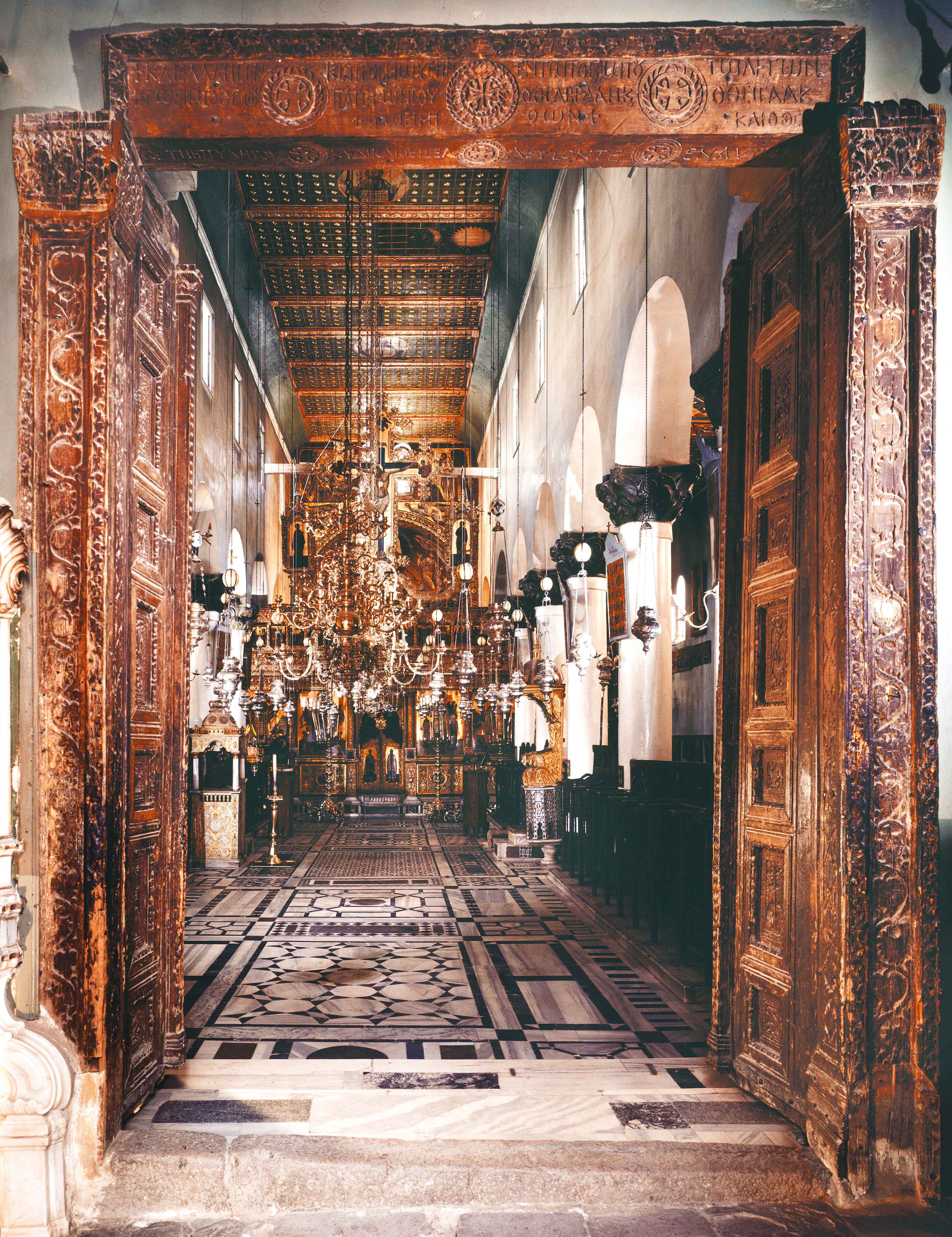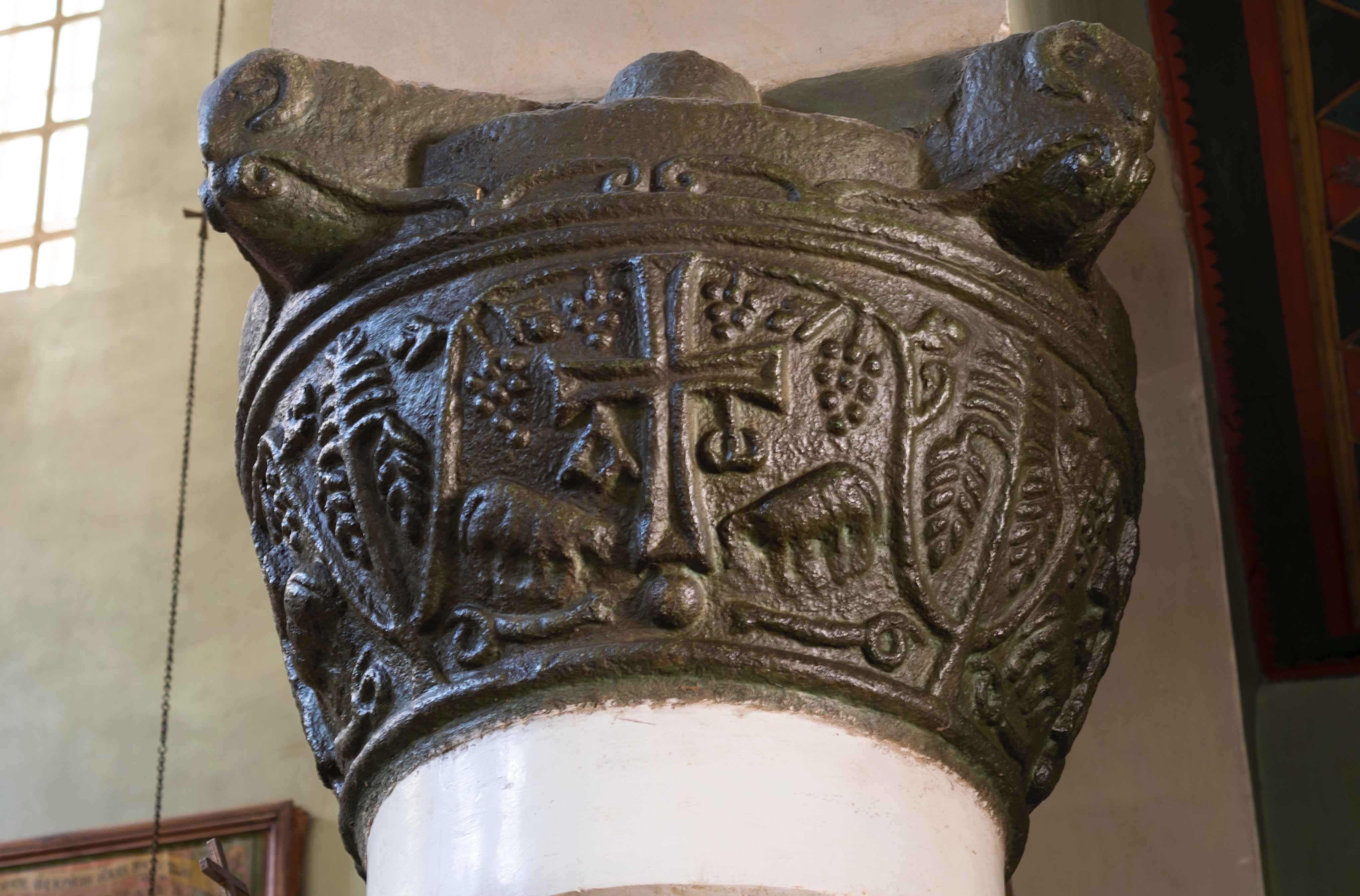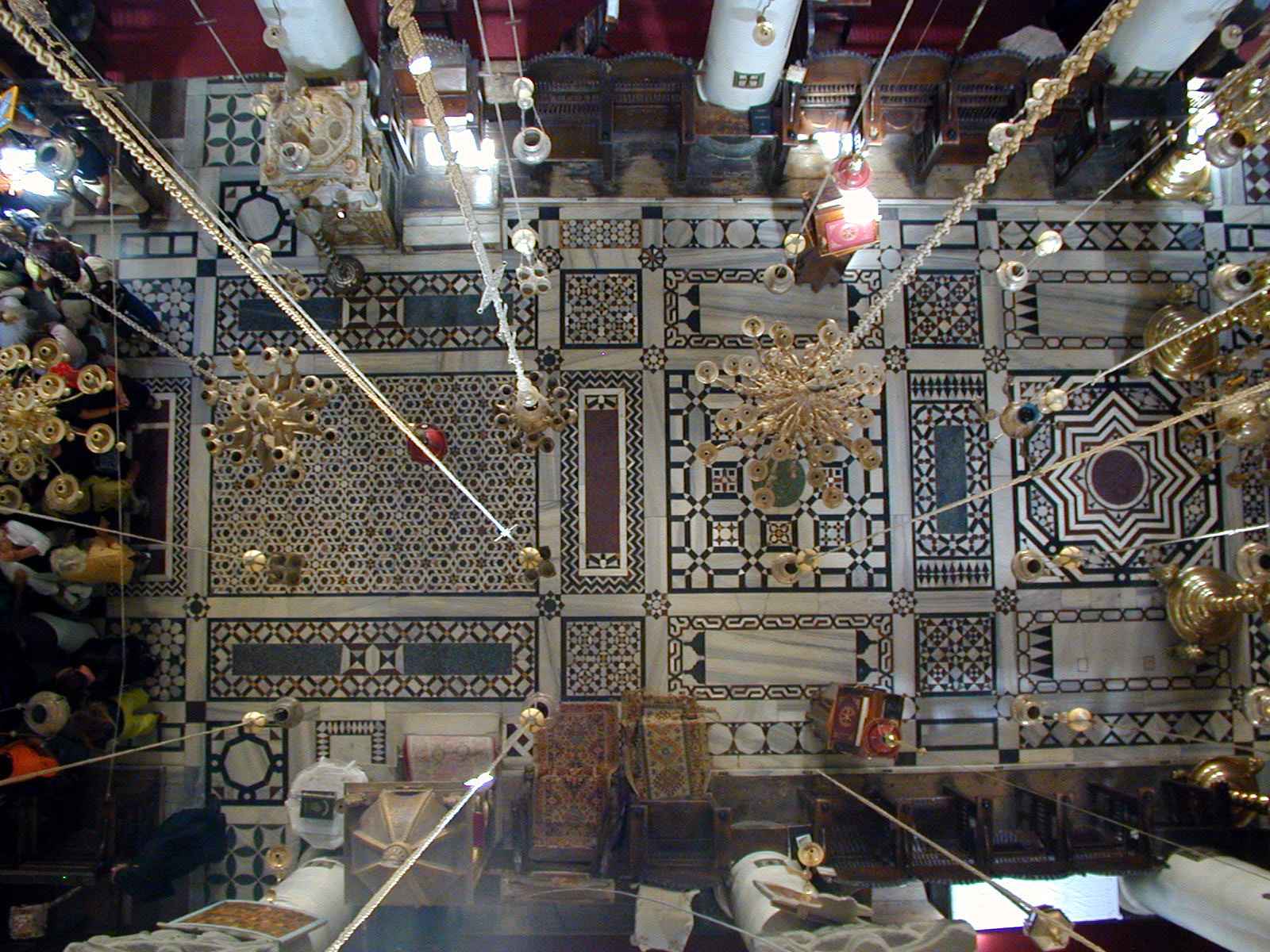CATHOLICON OF THE TRANSFIGURATION

The great basilica of the Transfiguration was begun in AD 542, and completed nine years later. It incorporated the site of the original Chapel of the Burning Bush. The catholicon is a three aisled basilica that faces exactly east. It has a narthex at the western end, and a spacious apse at the east. The large four-leaved doorway at the entrance to the nave has been preserved from the 6th century. On these is carved the same verse from the Psalms that is carved over the entrance into the monastery, “This is the gate of the Lord, into which the righteous shall enter.”
The ceiling beams are also intact from that time. In the eighteenth century, the carved ceiling beams were painted and gilded, and panels were added between the beams to hide the rafters. These now hide important inscriptions that were originally visible. The one reads, “For the salvation of our most august Emperor Justinian,” while the other reads, “For the memory and repose of our departed Empress Theodora.” These allow a precise dating of the basilica to within a few years, for we know that the Empress Theodora died in AD 548, and the building is described by Procopius, writing about the year 556. The outer doors to the narthex date from Fatimid times, and are made of many geometrical sections connected by tongue-and-groove joinery. On them one can see names and coats of arms carved by pilgrims during Crusader times. The one door is carved with representations of Old Testament theophanies that were beheld by Abraham and Isaac, Elias, Moses, and Zachariah. On the facing door is a carving of the Transfiguration.
 The aisles of the basilica are demarcated by twelve granite pillars, each pillar one great monolith, and each surmounted by a large capital. The carving on each capital is different. One can make out the cross with Alpha and Omega, lambs, date palms, and other ornaments. The columns, capitals, and walls were originally hewn granite, and austere. In the eighteenth century, the rough granite was plastered over, and the capitals painted green, to give them more the appearance of marble. On each of the twelve columns is an icon depicting all the saints whose memory is celebrated in each of the twelve months of the year. The front right column supports the icon for September, the front left column the icon for October, and so each month back and forth across the basilica to August, on the back left column. There is a metal cross let into the front of each column, and behind each cross are relics of several of the saints whose memory is celebrated that month.
The aisles of the basilica are demarcated by twelve granite pillars, each pillar one great monolith, and each surmounted by a large capital. The carving on each capital is different. One can make out the cross with Alpha and Omega, lambs, date palms, and other ornaments. The columns, capitals, and walls were originally hewn granite, and austere. In the eighteenth century, the rough granite was plastered over, and the capitals painted green, to give them more the appearance of marble. On each of the twelve columns is an icon depicting all the saints whose memory is celebrated in each of the twelve months of the year. The front right column supports the icon for September, the front left column the icon for October, and so each month back and forth across the basilica to August, on the back left column. There is a metal cross let into the front of each column, and behind each cross are relics of several of the saints whose memory is celebrated that month.

There are nine chapels flanking the great basilica, three across each side, and three across the eastern end. The chapels on the north are dedicated to Saint Marina, Saint Helen, and Saint Antipas. Those on the south are dedicated to Saints Cosmas and Damian, Saint Symeon the Stylite, and Saint Anne. The chapel to the east of the basilica is dedicated to the Burning Bush. To the left is the chapel of the Apostle James, the first bishop of Jerusalem, and to the right, the chapel dedicated to the Forty Martyrs of Sinai and Raitho.
The templon was made in Crete in the seventeenth century and transferred to the monastery in sections. It is surmounted by a life-sized Crucifixion that extends to the very ceiling. The icons on the iconostasion were painted by Jeremias Palladas in the latter eighteenth century. The inlaid marble floor dates from 1715, and is the work of Nasrala, a Christian artisan from Damascus. The entire basilica is adorned with a multitude of candelabra and silver lamps, given by sovereigns and pilgrims throughout the history of the monastery.
The Bell Tower
The present bell tower was constructed in 1871, but it rests on a sixth century foundation that seems to have been constructed with a tower in mind. The bell tower was constructed at the expense of the monastery Skevophylakion, Archimandrite Gregorius. It was built by artisans who came from the Greek island of Tinos, and is constructed in a style that is prevalent on that island. Nine bells are housed in the tower, given by the Emperor Alexander II of Russia. The tower also houses the monastery semantra, one made of maple, and the other of iron. These are struck on feast days. Their use predates the use of bells.




